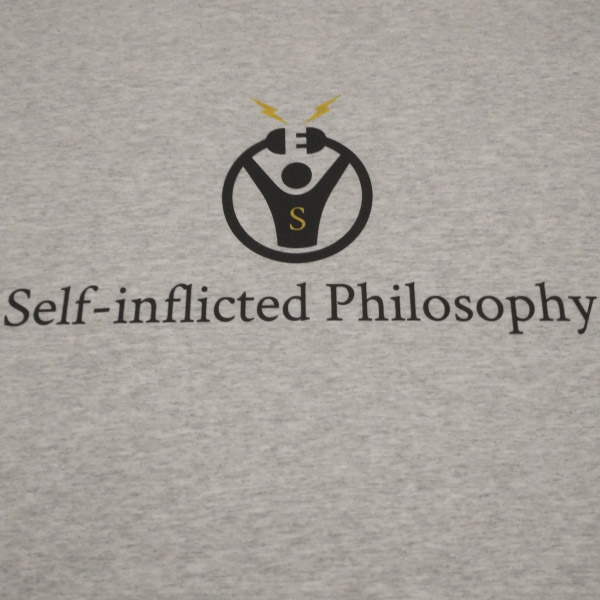The Thorn in the Whirlwind:
Disaster Shamanism Addendum
by Gary Z. McGee
“The influence of a vital person vitalizes.” ~Joseph Campbell
Order, comfort, and tranquility are overrated. They are too dull for sharpness. Too meek for diamonds and pearls. Too cold for forging. Too fragile for antifragility. There needs to be disorder, discomfort, and hunger. There needs to be friction, pressure, fire. There needs to be whetstones, hardship, and pain.
If it’s true that, as Michael Hopf said, “Hard times create strong men, strong men create good times, good times create weak men, weak men create hard times,” then it stands to reason that we need strong men despite the weak men that our “good times” have created.
Now enter the Disaster Shaman: the thorn in the whirlwind, the poet in the void, the apocalypse in the comfort zone, the social leveling mechanism par excellence. A Disaster Shaman is a minefield planted in a mind field. An unwanted explosion. A boat rocker on still waters. A wakeup call when you’re pretending to be asleep.
Other articles I’ve written on the subject speak of the bright side of Disaster Shamanism. They speak of balance and the Four Pillars: eco-consciousness, high humor, hero expiation, and self-overcoming. All of which are vital aspects of Disaster Shamanism, but none of which touch on the core dynamic, the vital fierceness, the primal paradox. None of which speak of the dark side, the shadow aspect, specifically, the disaster piece of the masterpiece.
Master of disaster:
“If you don’t turn your life into a story, you just become a part of someone else’s story.” ~Terry Pratchett
What is the simple meaning of disaster? Disasters are serious disruptions to the functioning of a community that exceed its capacity to cope using its own resources. Disasters can be caused by natural, man-made, technological, or even spiritual hazards, as well as various factors that influence the exposure and vulnerability of a community.
The term “disaster” literally means the loss (dis) of a star (astro), or the loss of our guiding light. Whether the disaster is large or small, intimate or collective, we don’t see it coming. It is, by definition, a shock or a surprise.
Disaster Shamans invert the shock. They expose the sick society that has lost its star. They eclipse the blinding light of culture that has prevented people from discovering their own guiding light, thereby revealing the star that has long been hidden from them. They create spiritual disasters that shake the foundations upon which the cultural lie has been told. Through spiritual disaster, existential whetstones are forged. From destruction comes instruction.
Disaster Shamans think (reason, intellectualize, influence) globally and act (teach, heal, guide) locally, embodying the idea that instead of waiting for grand breakthroughs to “fix the spiritual world,” we should implement spiritually interrogative solutions into everyday decisions and actions. We should plant question-mark seeds into the rigid soil of certitude and dogmatism.
This way the truth Quest is never forsaken for the “truth.” Nothing is taken for granted. Nothing becomes so certain that it sacrifices curiosity. Nothing becomes so powerful that power corrupts. Nothing becomes so “true” that it cannot be questioned. Nothing becomes so sacrosanct that it becomes blindly dogmatic. Nothing becomes so closed-in that it becomes a cultural/spiritual trap.
From disasterpiece to masterpiece:
“Change alone is eternal, perpetual, immortal.” ~Arthur Schopenhauer
The disasterpiece is a Disaster Shaman’s seed. It’s a Philosopher’s Stone tossed into still waters. It’s a red pill of reckoning forced down the throat of a blue pill world. It reorders outdated order through artistic disorder. This is what a Disaster Shaman plants inside the trap, inside a comfort zone that has shrink-wrapped its occupier, inside the horizon mistaken for a boundary, inside the “safety net” that inadvertently trips its user.
The disasterpiece lights up the darkness. It dampens the blinding light. It cripples high horses. It melts down golden idols. It humiliates ivory towers. It usurps thrones. It flips all scripts, turns all tables, and pushes all envelopes. It transcends the box everyone vainly attempts to think outside of.
The disasterpiece can come in many forms: art, poetry, music, dance, even civil disobedience. It symbolically inverts. It embodies verse. It rearranges the nightmare. It’s the primal rebellion of human imagination. It’s the warrior in the garden planting seeds in the corpse of God. It’s the blacksmith of the soul sharpening metal into Mettle.
Disaster Shamans dare to lose their footing and “slip into the masterpiece.” The disasterpiece is symbolic for losing one’s footing. It is the realization that one must go through many trials and tribulations before one can become enlightened. It’s the deep understanding that, as Carl Jung suggested, “No tree can grow to heaven unless its roots reach down to hell.” Echoing Nietzsche’s profound statement, “Everyone who has ever built anywhere a “new heaven” first found the power thereto in his own hell.”
Our individual shadow, as well as our collective shadow, reaches all the way into hell. We descend into hell to integrate it. We climb into heaven to animate it and bring it into sacred alignment with the whole. The disasterpiece is a shock and awe campaign that gets us out of whatever rut we’re in that’s preventing us from beginning the Hero’s Journey. It’s the wakeup call that sounds when we’ve pretended to be asleep for too long. It’s the shove from the nest forcing us to test our wings on the way down.
The disasterpiece inverts the Yggdrasil. It transforms our comfort zone into an abyss. It flips our safety net into tangled brambles. It’s the hard stone of Truth tossed into our glass house. It forces us to act. No more pretend forgiving. No more vain mirrors. No more cultural pretense. No more religious placation.
It’s time for the ego to be pressurized into the diamond of the soul. It’s time for dullness to be whetted. It’s time for brittleness to be polished into the pearl of fortitude. It’s time for fragility to discover the power of being never-not-broken in a state of antifragility. It’s time to master the disaster of being a mortal being with immortal aspirations.
Image source: Fractal Enlightenment
About the Author:
Gary Z McGee, a former Navy Intelligence Specialist turned philosopher, is the author of Birthday Suit of God and The Looking Glass Man. His works are inspired by the great philosophers of the ages and his wide-awake view of the modern world.
This article (The Thorn in the Whirlwind: Disaster Shamanism Addendum) was originally created and published by Self-inflicted Philosophy and is printed here under a Creative Commons license with attribution to Gary Z McGee and self-inflictedphilosophy.com. It may be re-posted freely with proper attribution, author bio, and this statement of copyright.













